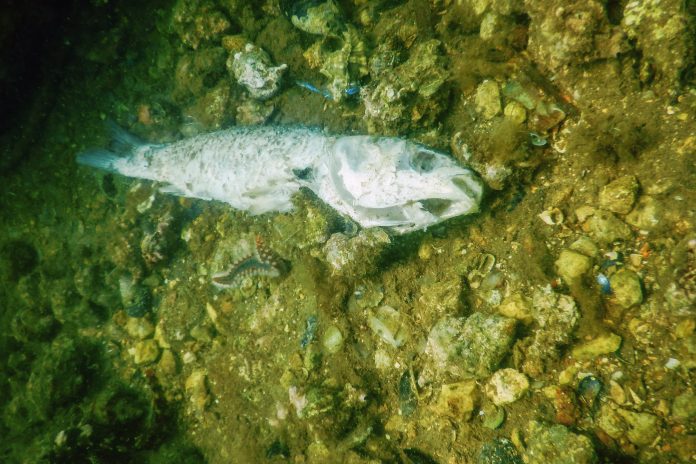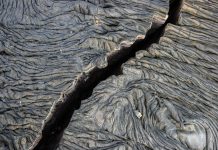It is often said that we know more about the surface of the moon or Mars than the ocean floor, but marine geoscience research is enabling a better understanding of some of the biggest issues
Marine geoscience research helps to maximise marine resources, such as oil, gas, marine aggregates, aquaculture and fishing, while also contributing to the conservation of biodiversity and marine archaeology.
The British Geological Survey began a programme to start mapping the United Kingdom Continental Shelf (UKCS) in 1966, starting with inshore areas and moving progressively into deeper and more exposed waters. At the time, the government’s commitment to investigate national offshore resources had not been attempted at such a scale by any other country.
The offshore survey of the regional mapping programme took over 20 years until in 1986, the United Kingdom became the first country to completely map its continental shelf.
During this work, BGS geologists produced a series of reports, scientific papers and 1:250,000 scale maps showing the distribution of sediments on the seabed, the Quaternary geology of sediments deposited over millions of years and the underlying bedrock.
The regional mapping of the UKCS led to interest in further surveys in deep-water areas to the west of the UK, backed by industry funding. Carrying out this work required the development of new offshore survey equipment, including a one-metre oriented drill specifically designed to recover samples for use in palaeomagnetic studies, autonomous battery-operated vibrocoring systems and a rockdrill capable of coring up to 55 metres below the sea floor in water depths up to 4,000 metres.
Today, the BGS Marine Geology and Operations team, based at the Lyell Centre 2 near Edinburgh, undertakes both scientific and commercial projects in UK-designated waters and internationally, from polar to tropical environments.
It has expertise in coring and drilling operations, geophysical surveys, seabed sampling and loch, lake and inshore surveys using the BGS survey vessel, The White Ribbon.
It is also the European operations facility of the International Ocean Discovery Programme, undertaking the management, logistics, planning and contracts for Mission-Specific Platform expeditions.
Marine aggregates
Marine aggregates are naturally occurring sands and gravels with the shape, strength and other physical characteristics generally identical to high-quality land-based aggregates.
They are mainly used in the manufacture of concrete, which accounts for nearly 80% of marine aggregates landed for construction purposes. By comparison, 60% of land-won sand and gravel production and 16% of crushed rock is sold as concrete aggregate.
Marine aggregates are also widely used in the production of asphalt, masonry and paving blocks, sports pitches, golf courses, drainage and fill materials, horticulture products and steel.
The UK has one of the largest dredging industries in the world. Over 20 million tonnes of marine sand and gravel are extracted from more than 65 licensed areas around the coast of England and Wales every year. No marine-dredged sand and gravel is landed in Scotland.
Approximately 17% of the sand and gravel used in England and Wales is now supplied by the marine aggregates industry. The sector also contributes to the economy through exports to the continent.
However, activities on the UKCS have undergone major changes due alternations to the planning regime introduced by the Marine & Coastal Access Act 2009 and the Marine (Scotland) Act 2010, as well as increased pressure on the seabed from new developments, such as renewable energy.
The Marine & Coastal Access Act, which covers England and Wales, established the Marine Management Organisation to licence, regulate and plan marine activities to ensure they are carried out in a sustainable way. It also introduced Marine Plan areas with an associated planning authority responsible for considering the social and economic needs of coastal communities and how to accommodate different activities, ranging from seaborne imports or building turbines to leisure and tourism, while protecting habitat. All areas are required to have a plan by 2021.
Similarly, the Marine (Scotland) Act introduced a strategic marine planning system designed to balance the competing demands on the seas while protecting the marine environment. Following on from this, the Scottish Government produced a National Marine Plan and subsequently Regional Marine Plans to consider the social, economic and environmental aspects of development.
As a result of these changes, the Crown Estate, as the owner of mineral rights in UK waters, wanted to improve its understanding of marine mineral resources and so commissioned the BGS to produce maps of sand and gravel, as well as coal, metallic minerals and evaporites.
Five 1:250,000 scale maps were produced covering:
• East Inshore and East Offshore Marine Plan Areas, Southern North Sea.
• The English Channel and Thames Estuary.
• Welsh Waters and the Irish Sea.
• Scottish Waters and the Central North Sea.
• A summary map for the United Kingdom Continental Shelf.
The maps provide spatial data for strategic planning and accessible information to assist in the protection of these non-renewable resources.
Future challenges
Looking ahead, an ever-increasing demand for housing and infrastructure will drive demand for construction aggregates. Meanwhile, climate change means demand for large volumes of marine-dredged sand and gravel for coastal protection, replenishing eroding beaches and improving inland drainage infrastructure.
The sector has entered a new phase, with geoscience research-backed planning and licensing supporting a more strategic, sustainable and long-term approach to the management of marine areas.











